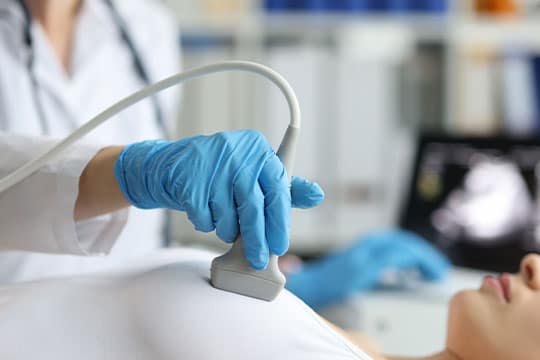Home > Disease and Treatments > Revealing The Truth About Breast Cancer: An Overview
Revealing The Truth About Breast Cancer: An Overview
Breast cancer is a cancer that forms in the breast cells.
In the US, Most women are likely to be diagnosed with breast cancer after skin cancer. The incidence of breast cancer is higher among women than among men. It is caused by uncontrolled cell growth in the breast. Breast cancer comes in different variations. It depends on which cells in the breast turn into cancer, which determines the kind of breast cancer.
In most cases, breast cancer starts in the ducts or lobules of the breast. The spread of breast cancer outside the breast can be facilitated by blood vessels and lymph vessels. Metastasizing occurs when breast cancer spreads to other parts of the body.
Breast Cancer typically Occurs in the following types:
Invasive ductal carcinoma As cancer cells grow outside the ducts, they invade other parts of the breast tissue.
Invasive lobular carcinoma Cancer cells begin in the lobules and spread to nearby breast tissues from there. Other parts of the body can also be affected by invasive cancer cells. Several less common types of breast cancer exist, such as Paget's disease, medullary, mucinous, and inflammatory.
A form of breast cancer characterized by inflammation is caused by cancer cells blocking lymph vessels in the breast skin. It causes the breast to become warm, red, and swollen. This is a rare type.
Paget's disease, which involves the nipples skin . In addition to the nipple, it usually affects the darker skin around it. It is also a rare type.
To Be Aware: Recognizing the Symptoms of Breast Cancer
Breast cancer symptoms vary from the different person. It is possible for a few people to have no signs or symptoms. Breast cancer can be detected by the following warning signs:
- You may notice a change in the size, shape, or contour of your breasts.
- You may experience a lump or thickening under your armpits or breasts throughout your menstrual cycle.
- Having dimpling, puckering, scaly, or inflamed skin on your breasts or nipples.
- A reddened breast or nipple.
- On either breast, there is a distinct area that differs from the others.
- You have a hardened area under your skin that looks like marble.
- Your nipple discharges blood-staining or clear fluid.
- Irritation of breast skin.
- A pulling sensation in the nipple area.
In case of any symptoms, consult your doctor right away. It is important to have in mind that these symptoms are not limited to cancer.
Uncovering the Causes of Breast Cancer: A Comprehensive Guide
Breast cancer occurs when the genetic material (DNA) is altered. It is often unknown what causes these genetic changes.
In some cases, however, these genetic changes are inherited, which means you're born with them. The term hereditary breast cancer refers to cancer caused by inherited genetic changes.
Genetic changes, including those that affect the BRCA1 and BRCA2 genes, can also increase your risk of breast cancer. The two changes also increase your risk of ovarian cancer and other cancers.
In addition to genetics, your lifestyle, and the environment also play a major role in breast cancer risk.
Risk Factors That Cause Breast Cancer: What You Should Be Aware Of
There are several factors that increase your risk of breast cancer, including:
- Older age
- breast cancer or benign (noncancerous) breast disease history
- Genetic changes in the BRCA1 and BRCA2 genes are associated with increased breast cancer risk
- Breast tissue with a high density
- Exposure to estrogen hormones due to a reproductive history including
1.Menstruating at an early age
2.Childbearing at an older age or never giving birth
3.Starting menopause at a later age
- Taking hormone therapy for symptoms of menopause
- Obesity
- Overconsumption of alcohol
A Closer Look at Breast Cancer Diagnosis
A breast examination will be performed by your healthcare provider, who will also ask about your family history, medical history, and any symptoms you may be experiencing. You will also be recommended tests to check for abnormalities in your breasts by your healthcare provider. These tests may include:
- Mammogram. Images taken with these special X-rays can reveal changes in your breasts or abnormal growths.
- Ultrasonography. Breast tissue is photographed using sound waves. Breast lumps or abnormalities can be diagnosed using this test.
- Positron emission tomography (PET) scanning:. PET scans highlight suspicious areas with special dyes. Using a scanner, your healthcare provider injects a special dye into your veins and takes images.
- Magnetic resonance imaging (MRI):. Using magnets and radio waves, this test produces clear, detailed images of the structures inside your breast.
It is possible that your healthcare provider will take a biopsy of your breast tissue if the imaging tests reveal anything abnormal . The pathology lab will analyze the sample.
Breast Cancer Treatment: That You Need to Know
A variety of breast cancer treatment options are available, including surgery, chemotherapy, radiation therapy, hormone therapy, immunotherapy, and targeted drug therapy. The best treatment for you depends on several factors, such as the location and size of the tumor, the results of your lab tests, and whether the cancer has spread. Depending on your unique needs, your healthcare provider will tailor your treatment plan. Often, different treatments are combined.
In breast cancer treatment, doctors from different specialties often collaborate. Surgery is performed by surgeons The medical oncologist specializes in treating cancer with medicine. The treatment of cancer by radiation oncologists is based on the use of radiation.
It can be difficult to choose the treatment that is suitable for you. Depending on the type and stage of your cancer, your doctor can recommend treatment options. You can discuss the risks and benefits of each treatment with your doctor. The side effects of drugs or other treatments are how your body reacts to them.
Preventive Measures of Breast Cancer: What You Need to Know
Breast cancer screening Breast self-examination for breast awareness, Drinking alcohol in moderation, Exercising most days of the week, limiting postmenopausal hormone therapy, Maintaining a healthy weight, and Choosing a healthy diet
Depending on your family history and precancerous breast condition, your doctor may suggest the following options to reduce your risk of breast cancer.
The use of preventive medications (chemoprevention) is reserved for women whose risk of breast cancer is very high. They are associated with a risk of side effects, so doctors reserve these medications for women who are extremely vulnerable to breast cancer. Your healthcare provider should explain the benefits and risks to you.
Breast cancer prevention surgery Women at high risk of breast cancer may choose to have their healthy breasts surgically removed (prophylactic mastectomy).
Breast cancer is a formidable opponent, but with regular screenings, self-examinations, and awareness of the warning signs, it can be diagnosed and treated at an earlier, more manageable stage. Early detection and advances in medical research have significantly improved the prognosis for those facing breast cancer. Therefore, staying informed and proactive about breast health is key to ensuring better outcomes and saving lives.
Disclaimer: This is general information about the disease and treatment options, please consult a specialist doctor for right diagnosis and treatment which may vary based on each patient. Book an appointment with your specialist to know further.
Appointments must be made 24 hours in advance.
Book an AppointmentRECENT BLOGS

While breast cancer affects millions of women worldwide, not all breast cancer is the same...
Read More
Lung cancer remains one of the most challenging health concerns globally but the good news...
Read More
The word "overdose" implies there's a known, safe dosage for a drug. It's not just about t...
Read More
